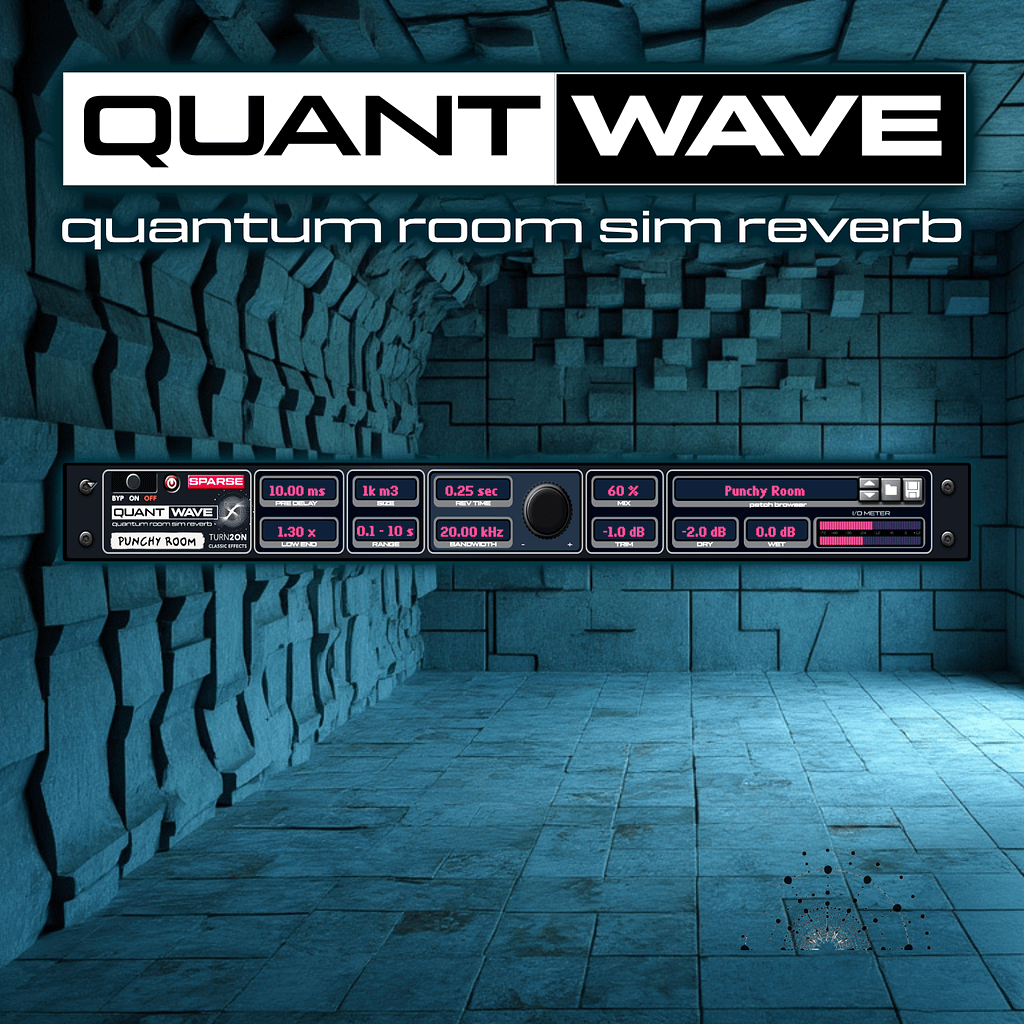PRE DELAY: (0-200ms). Controls the time before the reverb begins after the initial sound. Shorter times create tighter reflections, while longer times add a sense of distance or anticipation in the reverb
LOW END (0.01 to x4). Scales the reverb effect at low frequencies, enhancing or reducing bass response in the reverb tail. Higher values can emphasize bass-heavy reverb tails for rich, full-bodied effects. At value 1.0 low frequency is linear
SIZE ROOM MODES: Sets the perceived size of the simulated room, influencing both decay time and the spatial quality of the reverb tail. Each mode has a unique reverb time range:
1 m³: 0.1-1s
10 m³: 0.1-2s
100 m³: 0.1-5s
1k m³: 0.1-10s
REVERB TIME: Controls the decay time, allowing adjustments within each size setting for customized reflections, from subtle to expansive. Adjustable within Size modes
BANDWIDTH: (2-20 kHz) Adjusts the frequency range of the reverb tail, with lower frequencies creating a more vintage, warm sound, and higher frequencies providing a cleaner, more modern reverb
MIX: Blends the dry and reverb processed signals. Lower values create more subtle ambience; higher values bring more of the reverb effect to the front.
DRY LEVEL: Controls the output level of the dry (unaffected) signal, providing flexibility for balancing the effect in the mix.
WET LEVEL: Sets the level of the reverb signal, allowing you to control the prominence of the reverb effect separately from the dry signal.
OUTPUT TRIM: Sets the overall output level, useful for adjusting final gain to match the signal chain.
I/O METERS: Visual feedback for input and output levels, ensuring signal integrity and preventing clipping
PATCH BROWSER: Allows users to browse, load, and save custom patches for quick access to favorite settings
FX ACTIVITY / BYPASS: Toggles the effect processing on or off, useful for comparing dry and affected sounds.
Unique Reverb Tricks and Techniques
Using Reverb Modes
QuantWave includes 3 different reverb modes, each with different amounts of diffusion in the reverb tail, changing it’s envelope and density.
Normal Mode: Emulates the original QRS, offering warm and subtle decay—ideal for vocals, drums, and general reverb use.
Sparse Mode: Creates a textured reverb tail, especially useful on percussive sounds, adding a unique, airy sound without overloading density and sometimes with very own hi-pitched grains.
Dense Mode: Great for full mixes or when more sustain is desired, with a denser tail that fills the space more noticeably and adds richness to instrument stacks.
Playing with Time Ranges and Size
Small Size (1 m³, 0.1-1s): Shorter reverb times add tight, focused reflections, perfect for subtle room ambience.
Medium and Large Sizes: (10-1000 m³): Allows for longer times, enhancing spaciousness without overbearing the dry signal.
Bandwidth Tricks
Higher Bandwidths (10-20 kHz): Clean, brighter reverb tail, suitable for modern productions.
Lower Bandwidths (closer to 8 kHz): Mimics the vintage QRS quality, creating a warmer, more analog-like tail.




